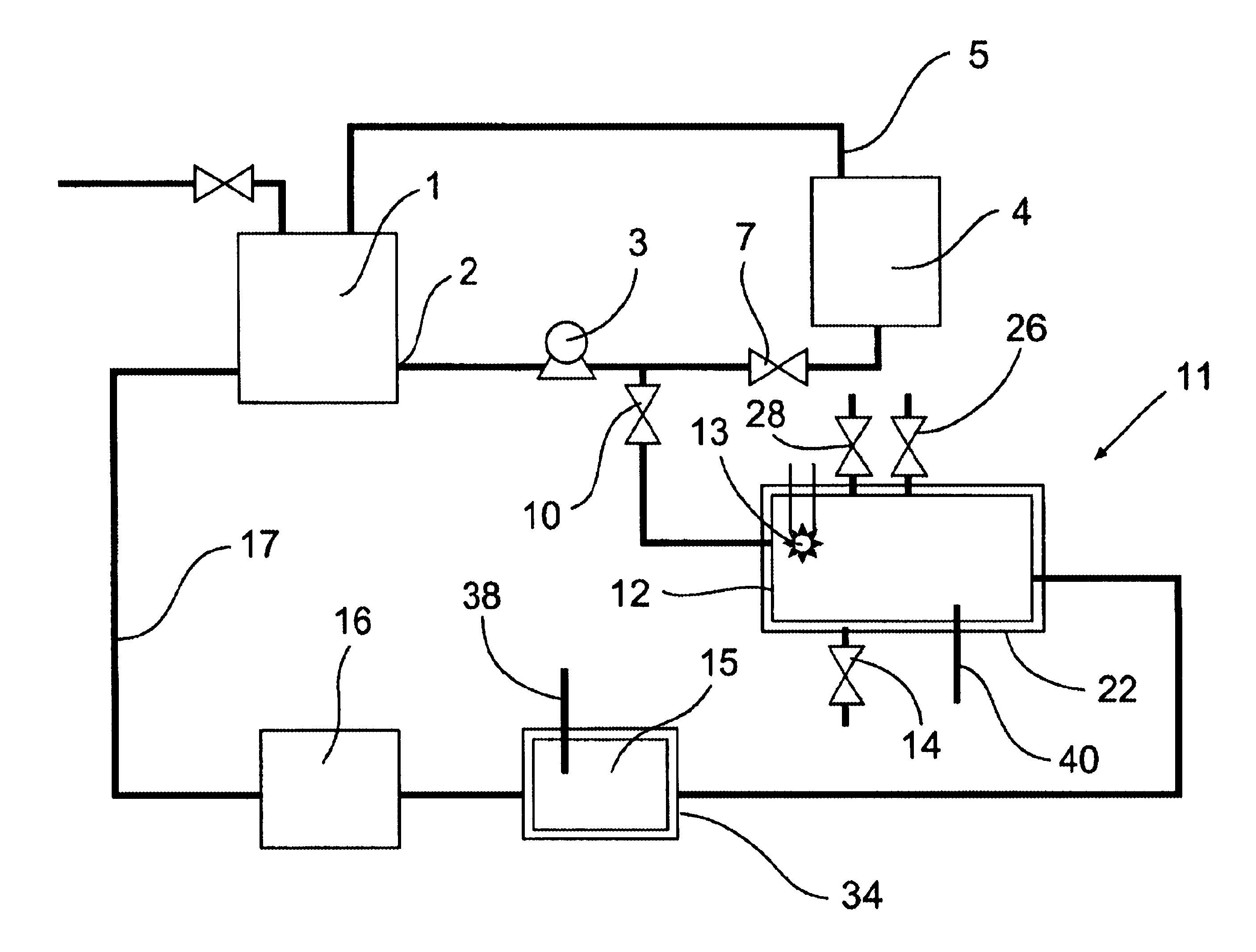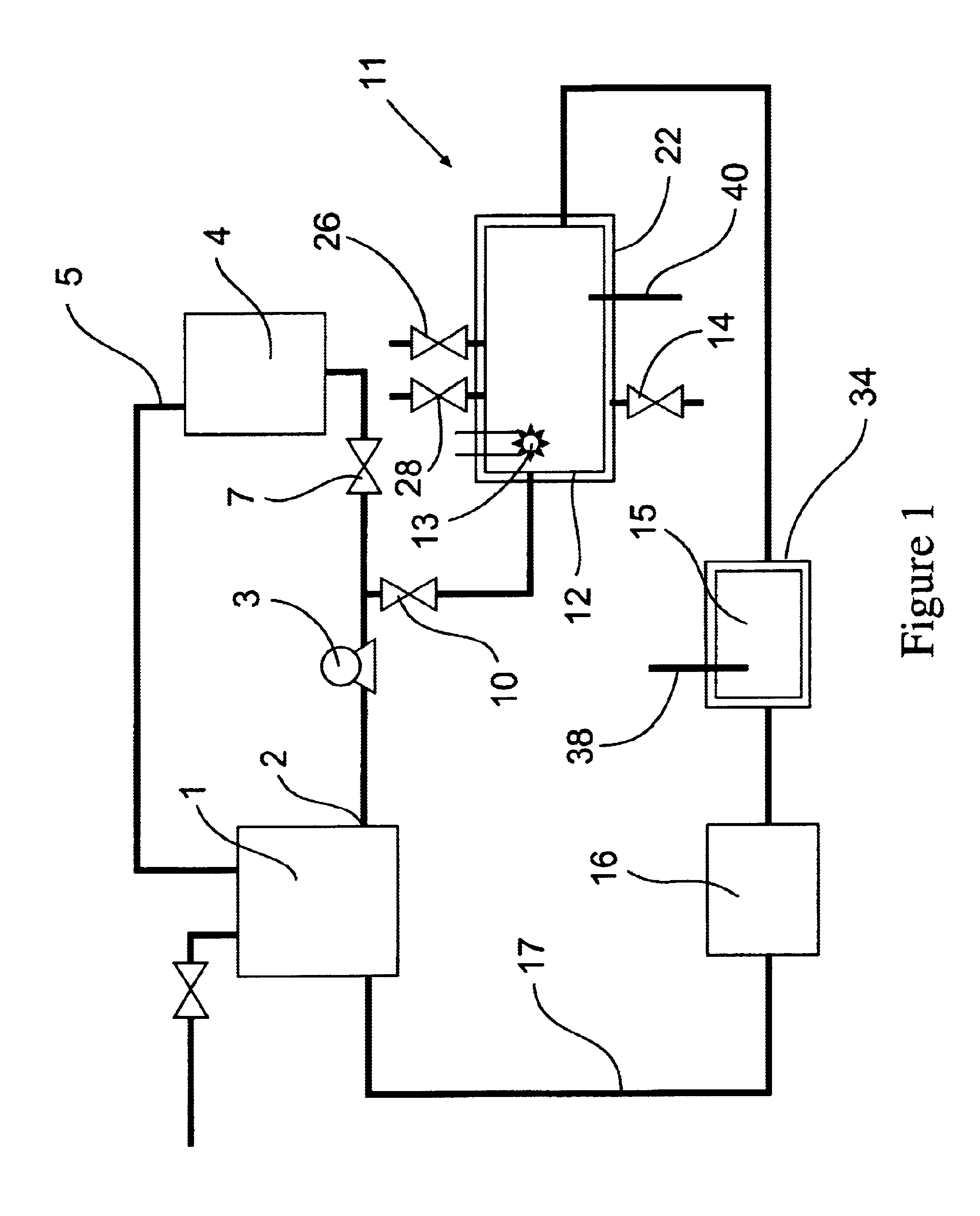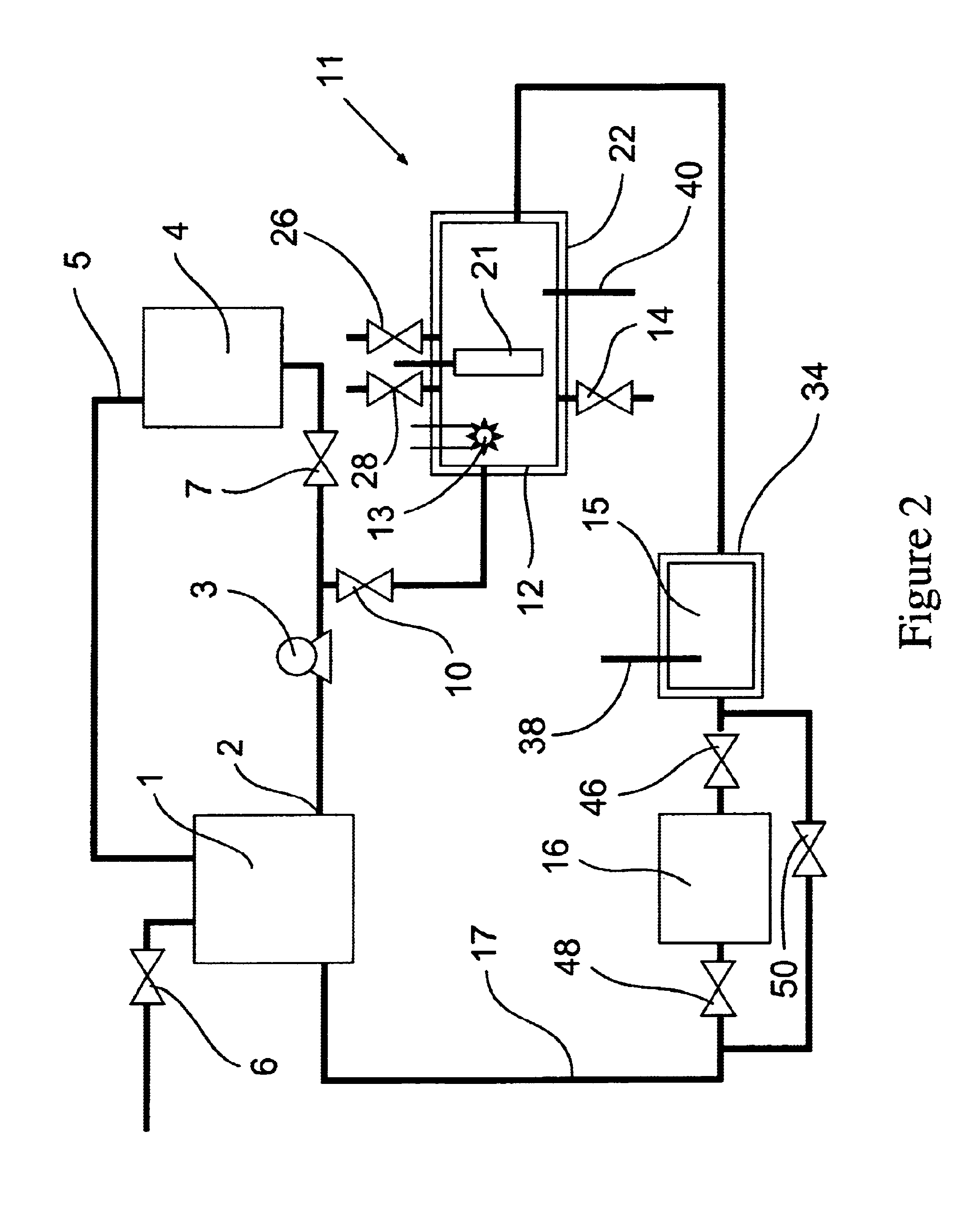Method and system for regenerating of plating baths
a technology of regenerating method and plating bath, which is applied in the direction of electrolysis components, water/sewage treatment by oxidation, membrane technology, etc., can solve the problems of iron having a deleterious effect on the performance of the plating process, and achieve the effect of reducing the level of organic contaminant, reducing the demand on the oxidation system, and maximizing the gas
- Summary
- Abstract
- Description
- Claims
- Application Information
AI Technical Summary
Benefits of technology
Problems solved by technology
Method used
Image
Examples
example 1
[0080]The removal of plating additives from a copper plating solution in the presence of copper ions by a reactor from the system shown in FIG. 1 is illustrated. A water cooled, jacketed, quartz tube which contained a 400 watt medium pressure mercury arc lamp from Sunlight Systems, Bogota, N.J. was placed in the center of a 3 liter glass reactor from ACE Glass, Vineland, N.J. Ozone gas was supplied to the solution in the reactor by ozone generator AX8400 from Astex, Inc, Woburn, Mass. through a ceramic sparger.
[0081]Two liters of a solution containing approximately 70 grams per liter of copper sulfate at a pH of about 0.5 and containing plating additives of concentration approximately 45 ppm total organic carbon was prepared and charged into the reactor. Ozone gas, in a concentration 15 percent by weight, was then sparged into the copper sulfate solution containing the plating additives. The 400 watt ultraviolet lamp was energized and the temperature of the solution was controlled a...
example 2
[0083]The removal of high concentrations of plating additives from a copper plating solution with ozone gas and hydrogen peroxide in the presence of copper ions by a reactor from the system shown in FIG. 1 is illustrated but without the organics scavenger step 16 which is by-passed in the manner shown in FIG. 2. A water cooled, jacketed quartz tube which contained a 400 watt medium pressure mercury arc lamp from Sunlight Systems, Bogota N.J. was placed in the center of a 3 liter glass reactor from ACE Glass, Vineland, N.J. Ozone gas was supplied to the solution in the reactor by Ozone Generator AX8400 from Astex, Inc, Woburn, Mass. through a ceramic sparger.
[0084]Two liters of a solution containing approximately 125 grams per liter of copper sulfate at a pH of about 1 and containing plating additives of concentration approximately 1450 ppm total organic carbon was prepared and charged into the reactor. 180 milliliters of 30% hydrogen peroxide from Ashland Chemical was added to the s...
example 3
[0089]The removal of plating additives from a copper plating solution with ozone gas, hydrogen peroxide, and carbon filtration in the presence of copper ions by a reactor from the system shown in FIG. 1 is illustrated. A water cooled, jacketed, quartz tube which contained a 400 watt medium pressure mercury arc lamp from Sunlight Systems, Bogota, N.J. was placed in the center of a 3 liter glass reactor from ACE Glass, Vineland, N.J. Ozone gas was supplied to the solution in the reactor by ozone Generator AX8400 from Astex, Inc, Woburn, Mass. through a ceramic sparger. An ozone gas monitor from IN USA, of Needham, Mass. was connected to the reactor gas outlet. A carbon filter from KX Industries L.P., of Orange, Conn., was connected to the outlet of the reactor and oxidized solution pumped through the filter.
[0090]Two liters of a solution containing approximately 125 grams per liter of copper sulfate at a pH of about 1 and containing plating additives of concentration approximately 225...
PUM
| Property | Measurement | Unit |
|---|---|---|
| temperature | aaaaa | aaaaa |
| thickness | aaaaa | aaaaa |
| temperature | aaaaa | aaaaa |
Abstract
Description
Claims
Application Information
 Login to View More
Login to View More - R&D
- Intellectual Property
- Life Sciences
- Materials
- Tech Scout
- Unparalleled Data Quality
- Higher Quality Content
- 60% Fewer Hallucinations
Browse by: Latest US Patents, China's latest patents, Technical Efficacy Thesaurus, Application Domain, Technology Topic, Popular Technical Reports.
© 2025 PatSnap. All rights reserved.Legal|Privacy policy|Modern Slavery Act Transparency Statement|Sitemap|About US| Contact US: help@patsnap.com



